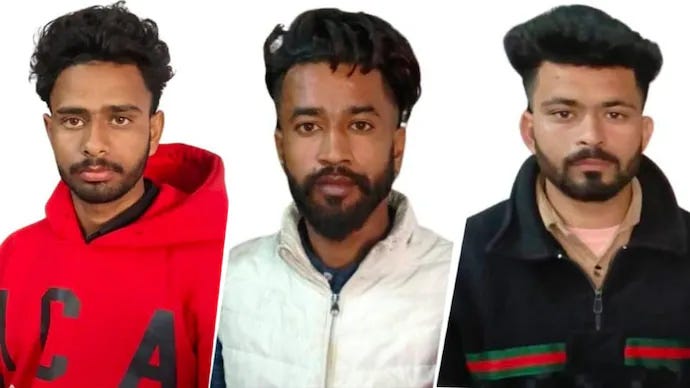Indian media and fake encounters
"Young Sikhs being killed by security forces were turned into lifeless statistics whose murders were robotically portrayed as encounters by the press. This clearly remains an ongoing pattern today."
On December 23, Government-aligned media outlets across India flashed headlines regarding an alleged encounter with Sikh jujharoos in Pilibhit, Uttar Pradesh in which three naujawan were killed. The naujawan were believed to be linked to a series of guerrilla strikes on Indian security forces across Punjab, particularly a December 18 attack on the Bakshiwal police outpost. According to police accounts parroted by Indian media, the naujawan opened fire on a Punjab-UP joint police team and were killed by police counter-fire.
In reality however, this incident is simply another examples of the police-media-government nexus that continues to enable anti-Sikh violence and the criminalization of dissent across the subcontinent. The naujawan were declared “guilty” in the national media simply on the word of the police; without a shred of evidence being presented, let alone actually being tried and convicted by an impartial court. While the government-aligned reporting has faithfully parroted police accounts without question, even a cursory look at the facts indicates that this was clearly a fake encounter in which the three naujawan were already in custody when they were killed by security forces.
In addition to the gunshot wounds on two of the naujawan clearly indicating that they were shot from point-blank range, the images circulated to the government’s media partners indicate that they were recorded and photographed in the exact same outfit that they were murdered in. According to independent media oulets, Sikh jujharoos of the Khalistan Zindabad Force had taken responsibility for the December 18 strike. In an audio recording published by Sikh media outlets, Jathedar Ranjit Singh Jammu confirmed that the three had been taken into custody by security forces before they were killed in a staged encounter.
According to a publication by the Khalistan Centre, this modus operandi is a clear continuity of India’s genocidal counter-insurgency strategy from the 1980s and 1990s.
Not only did Indian media uncritically convey the official accounts of security forces without question, media outlets often operated as active participants in the Indian counter-insurgency by manufacturing and distorting facts to villainize Sikh political mobilization and the jujharoo lehar (movement)… [A senior]journalist who retired after thirty years with the United News of India (UNI) news agency, describes Indian media’s role in Punjab as an ideological state apparatus to help implement the state’s political agenda. The press aggressively pushed the discourse of terrorism in such a way that the word terrorist and Sikh became “synonymous in the public mind, so that people are not very interested in knowing if the Sikhs killed in the encounters are in fact terrorists.” With regards to “fake encounters”:
“The news usually given after each such ‘encounter’ is that a police or paramilitary team was fired at by ‘terrorists,’ and on returning the fire in self-defence, a number of them were killed. The correspondents file such stories, the editors accept them, and the newspapers feature them prominently. Seldom, if ever, do national dailies launch their own detailed investigation of such encounters.”
The quoted journalist reiterated this assessment of reporting at the time, noting how the young Sikhs being killed by security forces were turned into lifeless statistics whose murders were robotically portrayed as encounters by the press. This clearly remains an ongoing pattern today.


